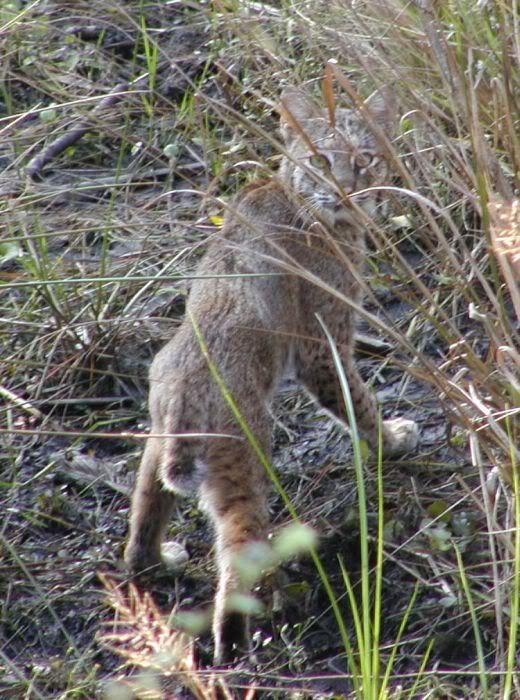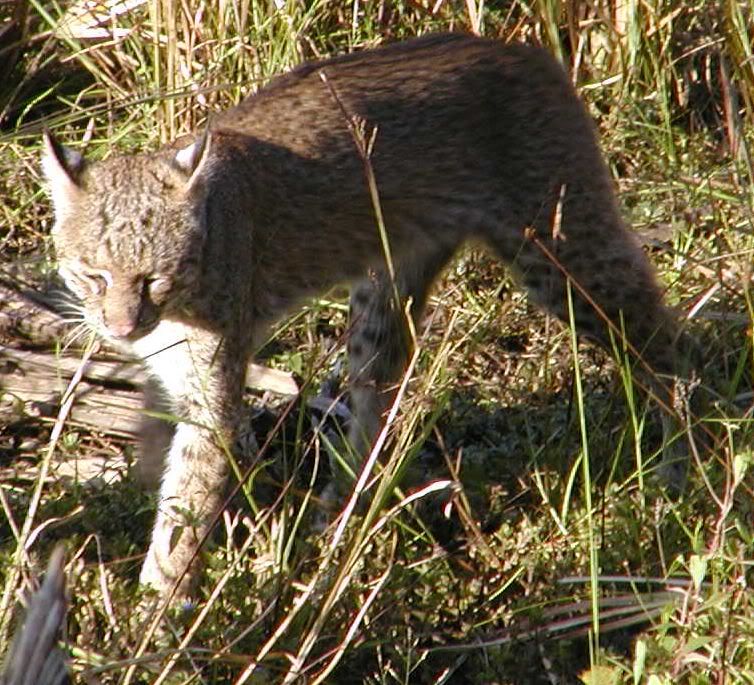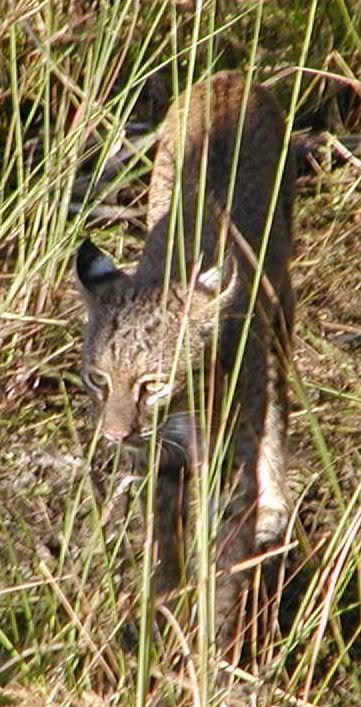-
Friends, our 2nd Amendment rights are always under attack and the NRA has been a constant for decades in helping fight that fight.
We have partnered with the NRA to offer you a discount on membership and Muzzleloading Forum gets a small percentage too of each membership, so you are supporting both the NRA and us.
Use this link to sign up please; https://membership.nra.org/recruiters/join/XR045103
You are using an out of date browser. It may not display this or other websites correctly.
You should upgrade or use an alternative browser.
You should upgrade or use an alternative browser.
Bobcat Hunting
- Thread starter spitfire
- Start date

Help Support Muzzleloading Forum:
This site may earn a commission from merchant affiliate
links, including eBay, Amazon, and others.
bigbore442001
50 Cal.
You have to hunt where there are bobcats. I know that sounds a bit moronic to state but it does not good to hunt an area that has no kitties.
They seem to run in large circles. I hunt a small farm in Connecticut and had a really big one almost climb into my stand. My Dad saw the same one and a smaller bobcat. After that, we never saw them there again.
I hunt another spot, public land in fact, in Massachusetts. I have spotted bobcat from one of my stands for a number of times. Then they sort of went away.
I think there might be some merit in hunting them from a treestand in an area that has a lot of them. They don't seem to look up at you until you get their attention.
They seem to run in large circles. I hunt a small farm in Connecticut and had a really big one almost climb into my stand. My Dad saw the same one and a smaller bobcat. After that, we never saw them there again.
I hunt another spot, public land in fact, in Massachusetts. I have spotted bobcat from one of my stands for a number of times. Then they sort of went away.
I think there might be some merit in hunting them from a treestand in an area that has a lot of them. They don't seem to look up at you until you get their attention.
SavageArcher
40 Cal.
- Joined
- Sep 10, 2005
- Messages
- 213
- Reaction score
- 2
Nice pics hoyt. Spit the only bobcat I've ever gotten was from my deer blind but I've jumped afew in the brush and did manage to call one up with a dying rabbit call. They are creepy critters the way they just appear out of nowhere without a sound. They seem to like to lay up in the thickest clump of brush, so look for sign in areas like that and maybe try using a call.
That's where I see most of the ones I[url] see..in[/url] thick overgrown brush areas like grown up briar infested old field edges and in swamps. You would think cats wouldn't like wet swamps, but I see them all the time stepping from one log or dry spot to the next, going through cypress swamps.
Last edited by a moderator:
I did think about it bout 30yrs. ago..bought a good Pentax 35mm with telephoto lense went out in the woods and nothin showed up. I said to heck with that, if I got to wait that long I'm going to kill somethin.spitfire said:Nice photos!Hoyt have ever thought of a career in Wild life Photography? :thumbsup:
Walks Alone
45 Cal.
- Joined
- Nov 19, 2005
- Messages
- 923
- Reaction score
- 8
Having done P&V&ADC for decades, I’d agree with bigbore442001 that pre scouting for the right location is the single most important techy for calling kitties, and then setting up correctly at those locations based on where you think they’ll answer your call from when you do hunt it. Brush piles, over-grown washes or river bottoms, fence lines, old wells and deserted farms/ranches are just a few good starting places to look for sign. Normally, and I use that word with some reservations, they are slow to respond to calls - spot and stalk their way in with hang-ups common. Not uncommon for one to take ¾ hour coming in even though they are really not as smart as some people think they are. More often than not out here in the west anyway, a fox or coyote will come in first and spoil the stand if your location is not right "where they live". By being in the right place you might get a quicker response. I do use specific techniques for the cats (kitties & lions) and vary them as the stand and situation dictates. A bird distress with a higher pitched mouth call is my favorite for bobcats, with rodent squeaks next best. They both produce better than rabbit distress from my experience (and I won’t even own one of those electronic doodads). A feather or fluff hung from a handy branch upwind makes a good decoy to keep their focus off you when using mouth calls. So to me there is no need for a tree stand at all. I don’t use scent block or wear camo when I hunt traditional with ML’s (just wear my leathers), but as long as I have set up right, have the wind right and stay immobile they don’t know I’m there until the shot.
I did have to give 2 kitties a free pass last time out calling with the muzzleloaders though because I was actually after grey fox and didn't have any kitty tags. You'd think I would know better and be prepared for anything that comes in after all these years. :redface:
BTW, for the ultimate predator hunting rush, try calling in lions all traditional.
I did have to give 2 kitties a free pass last time out calling with the muzzleloaders though because I was actually after grey fox and didn't have any kitty tags. You'd think I would know better and be prepared for anything that comes in after all these years. :redface:
BTW, for the ultimate predator hunting rush, try calling in lions all traditional.
Advice well given :v !My problem is hangups in thick cover(Swampy Riverine Flood plains the normal haunt of BOB at my location).I use the before mentioned successful calls except the bird one.I have never used a bird call.What kind/type do you use,recommend?
Walks Alone
45 Cal.
- Joined
- Nov 19, 2005
- Messages
- 923
- Reaction score
- 8
spitfire said:Advice well given :v !My problem is hangups in thick cover(Swampy Riverine Flood plains the normal haunt of BOB at my location).I use the before mentioned successful calls except the bird one.I have never used a bird call.What kind/type do you use,recommend?
A common problem with the cats, especially on a boarder between cover and some open ground they don't want to cross. A decoy may help. If you're not seeing them come in, you might try looking for shapes and colors out of place instead of the whole animal. If you do see them "hang up", try switching sounds (but keep them soft and don't over call). A lot of times that will repeak their interest and get them moving again. For me most of the fun and challenge in calling is out witting them at their own game.
I make all of my own mouth calls out of antler, ivory and hardwood, and both enclosed and open reeded. I size/shape the call chamber/baffles and tune the reeds for what I plan to mimic with them. But almost any store bought call that you can get higher pitched sounds out of will make acceptable bird distress sounds with some practice. Enclosed reeds are the easiest to learn to "trill" on, but it can be done on open reeded calls as well. Diaphragm calls (elk, turkey) work too for bird distress, but were the hardest to master for me.
HTH - good luck.
Mad Professor
50 Cal.
- Joined
- Aug 20, 2005
- Messages
- 1,497
- Reaction score
- 181
Those aren't but kittens!
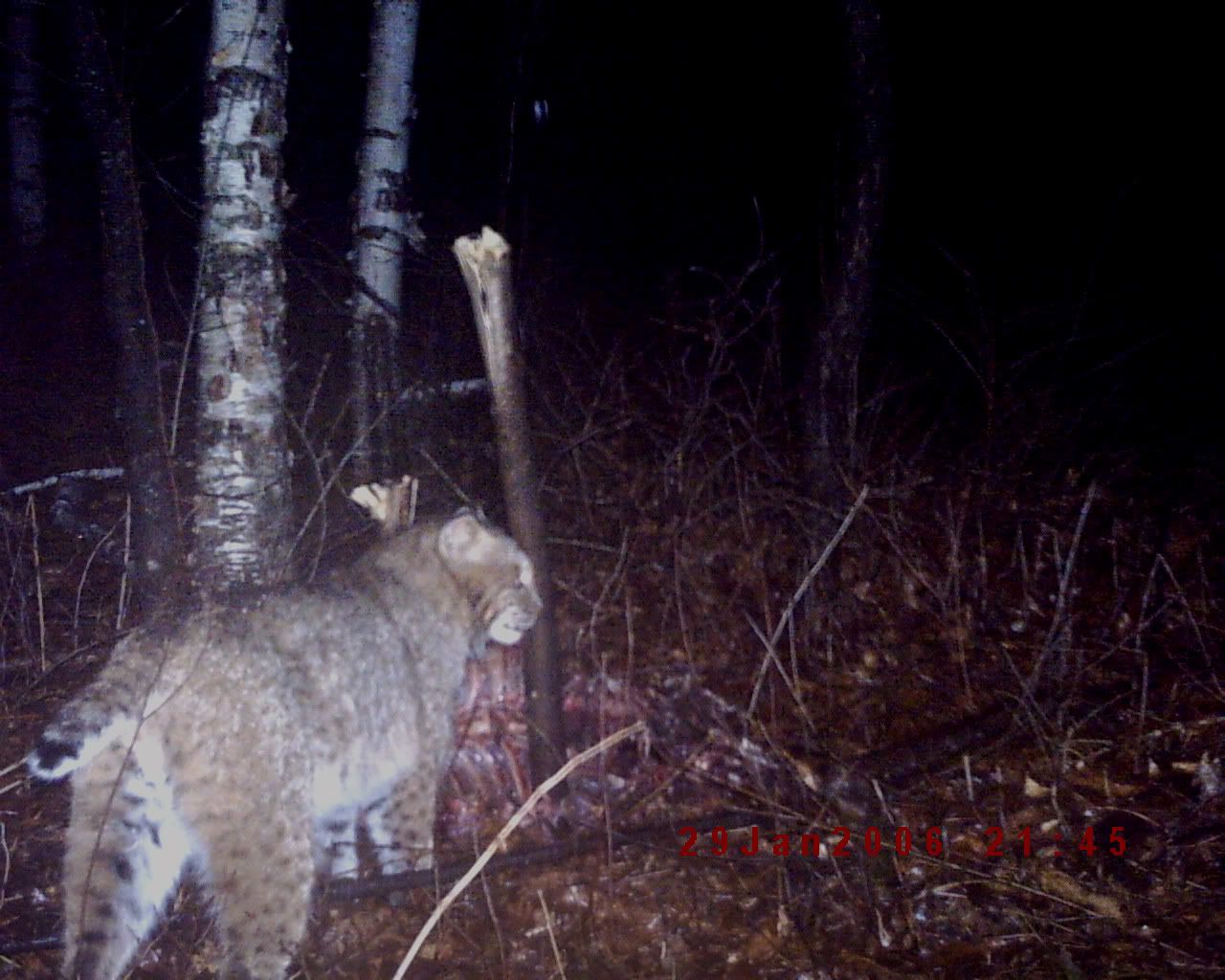
The Bobbys up here scare the hell out of the coyotes!!!

The Bobbys up here scare the hell out of the coyotes!!!
Wow!I remember there size up north.I lived on a Dairy Farm in Morrow County,Ohio in the Late 70's.We had 20# size Maine Coons for barn cats.On cold winter morning(-20 F)the dead silence during milking was broken by the mating screechs of a Cat.I beamed my flashlight(5 am)under the barn and to my surprise.I spied a male bobcat mating a Maine coon!The Bobcat was Twice the size of the Maine coon cat and easily more!I recall thinking to my self "Well that is one way to keep warm". :haha:
Mad Professor said:Those aren't but kittens!

The Bobbys up here scare the hell out of the coyotes!!!
They call him MR. Bob! :rotf:
Davy
Lynx's don't count...although that might be what's in the photograph I posted with the snow..it's in Maine. Is it Bobcats or Lynx or both in Maine?
Spit..I got that picture off a forum where a guy was talking about the man in the picture being probably one of the best deerhunters of all time.
Looks like he was pretty good a killing bobcats too.
Spit..I got that picture off a forum where a guy was talking about the man in the picture being probably one of the best deerhunters of all time.
Looks like he was pretty good a killing bobcats too.
Mad Professor
50 Cal.
- Joined
- Aug 20, 2005
- Messages
- 1,497
- Reaction score
- 181
Same cat was here this morning, on my deck waiting for squirrels at the bird feeder! :shocked2:
Watched for 40 min. til a squirrel ran by, Bob took chase but missed as squirrel made it to big white pine tree. :blah: Bob was a bit POed, tail twiching, then sluked off into the woods. :cursing:
No digitals but got some 35mm pics so will have wait to fill the roll and develop/scan before I can post. Only got 1 of the chase and the angle was not good. :winking:
Watched for 40 min. til a squirrel ran by, Bob took chase but missed as squirrel made it to big white pine tree. :blah: Bob was a bit POed, tail twiching, then sluked off into the woods. :cursing:
No digitals but got some 35mm pics so will have wait to fill the roll and develop/scan before I can post. Only got 1 of the chase and the angle was not good. :winking:
Mad Professor
50 Cal.
- Joined
- Aug 20, 2005
- Messages
- 1,497
- Reaction score
- 181
Don't like to waste anything after hunting season so I save bones and such after butchering, it's better giving this back to the animals than letting it rot in the dump.
After stripping out ribcage of an 8 pter (BP harvested) put this out back for the critters, thats what you see in the pic. (To give you a size perspective on the cat the deer dressed out close to 200 lbs and was harvested late Dec. so was a lot heavier before rut.)
Bobby has kept most of the others away but have seen a few coyotes and a big fischer (remnants of front 1/4 that took a hit from pass through in background in this pic):
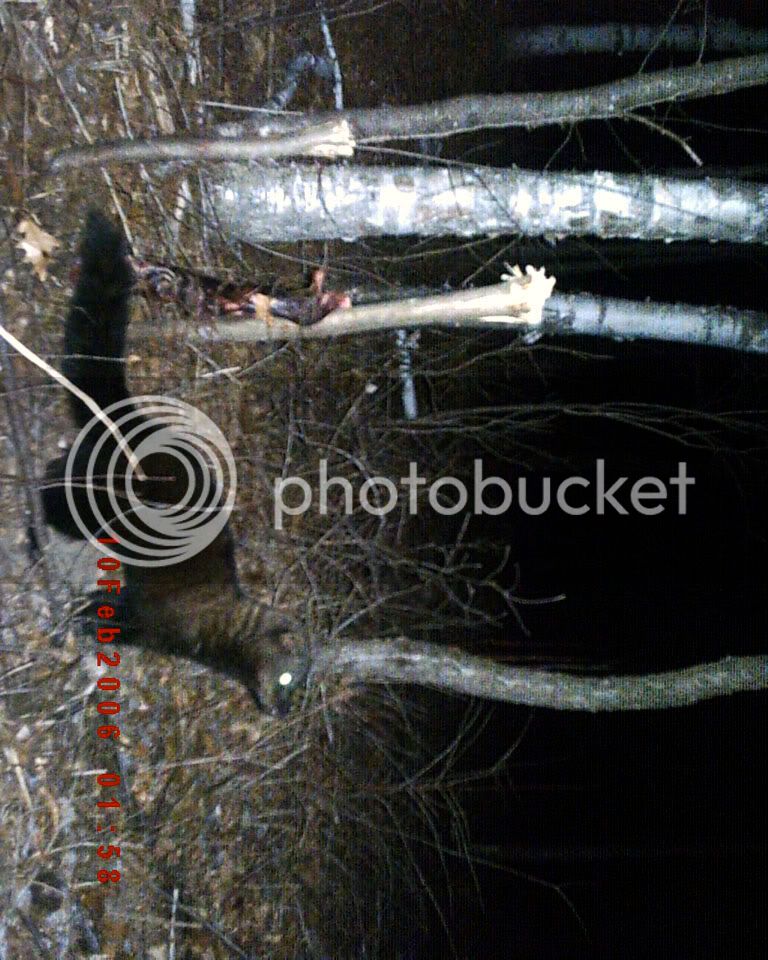
After stripping out ribcage of an 8 pter (BP harvested) put this out back for the critters, thats what you see in the pic. (To give you a size perspective on the cat the deer dressed out close to 200 lbs and was harvested late Dec. so was a lot heavier before rut.)
Bobby has kept most of the others away but have seen a few coyotes and a big fischer (remnants of front 1/4 that took a hit from pass through in background in this pic):

Similar threads
- Replies
- 0
- Views
- 424
- Replies
- 45
- Views
- 3K
- Replies
- 64
- Views
- 3K




